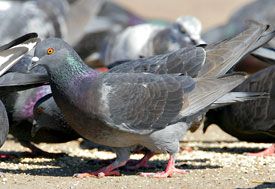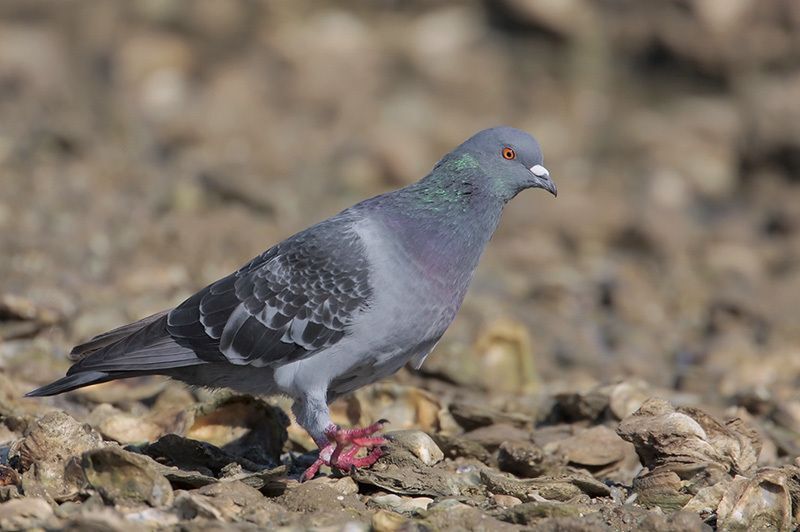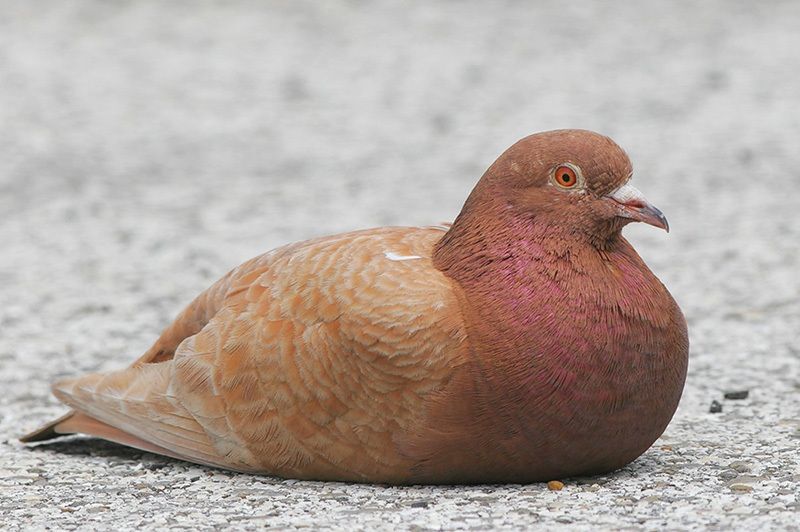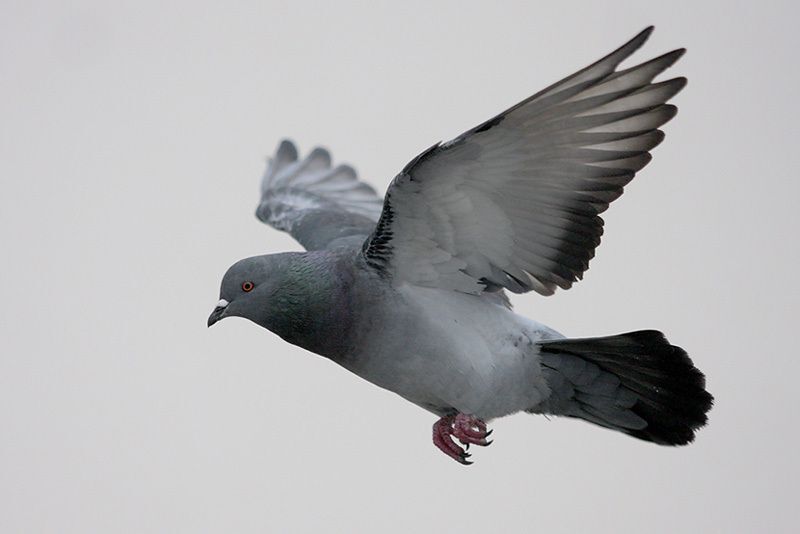Rock Pigeon

© Greg Lavaty
Columba livia
Family: (Columbidae) Pigeons and Doves
Preferred Habitat: Urban
Seasonal Occurrence: Abundant permanent resident
Profile by Carrie Chapin: The Rock Pigeon is a species often scoffed at by birders and city-goers alike. The Rock Pigeon is a charismatic, cosmopolitan species known to almost everyone due to its strong presence in pop culture and affinity for cities and developed areas. It is not uncommon to see a mixed flock of Rock Pigeons and house sparrows eating crumbs near a café or picking apart scraps in a parking lot. Rock Pigeons were the first birds domesticated by people at least 10,000 years ago and have since been used as food, pets, and messengers. Though seen by many as a “trash bird,” Rock Pigeons bring life to gray areas and meaning to many people.
Perhaps the most identifiable bird worldwide, Rock Pigeons are known for their plump form, pink legs, broad wings, and characteristic head bob. After centuries of domestication, Rock Pigeons come in many colors, including brown, white, speckled, piebald, dark, and others. The wild form has a gray body, iridescent neck, white operculum on the beak, and two black wingbars. Pigeon wings make a chaotic noise when taking off. An adept generalist, the Rock Pigeon occupies all continents except Antarctica. However, its native range remains unknown.
Rock Pigeons eat seeds and other fallen plant material. They will also eat insects and anything else that falls their way. Like other doves, Rock Pigeons ingest stones to fill their crops and grind their food into smaller pieces. Rock Pigeons build their stick nests on narrow ledges along buildings, bridges, and cliffs. Provided an ample food supply, breeding can take place any time of year. Two eggs are laid and incubated for two weeks before hatching. Both parents feed the young crop milk, a fluid produced by the lining of the crop that is high in fat and protein. Crop milk is fed to the young for the first week of life before seeds and other foods are slowly introduced.
The favorite food of city-dwelling Peregrine Falcons and many other birds of prey and mammals, Rock Pigeons form the bottom of many city food chains. Interestingly, the North American population of Rock Pigeons declined by 46% between 1966 and 2015. The causes of this decline are unknown. Rock Pigeons can be found in most urban areas and places where food and sheltered ledges are found. Many people find purpose and delight in feeding and watching pigeons. So, the next time you are out and about, look for these plump little birds and appreciate the life they bring to otherwise bleak areas.
-
Cornell Lab of Ornithology
-
Field Guide

© Greg Lavaty, www.texastargetbirds.com

© Greg Lavaty, www.texastargetbirds.com

© Greg Lavaty, www.texastargetbirds.com

© Greg Lavaty, www.texastargetbirds.com

© Greg Lavaty, www.texastargetbirds.com




















